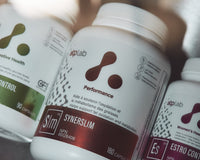Five Tricks for Rapid and Effective Weight Loss

This article offers a brief summary of five methods I have used for nearly 17 years to get my clients back in top shape in record time. With over 150 fitness and body building awards to my credit, I've had the chance to try out various weight-loss methods. Here are the ones that give the best results for the time invested.
1. Personal diet: the crux. The figure to keep in mind is 80%. That's because at least 80% of your final outcome is attributable to your personal diet. You can run, jump and sweat all you want but if you eat two hot dogs with a side of fries after the gym, you can kiss your weight-loss goals goodbye! "But I deserved that treat! I worked out so hard!" I've heard it all before: no more excuses, no lies! It's action and reaction. It’s that simple. Or, in other words, you are what you eat. When you consider the vast amounts of sugar and trans fats that people consume, it's no wonder that around 30% of Americans are obese (source: JAMA 2003).
A good start is to split up your food intake using the system popularized by Dr. Barry Sears, the best-selling author of The Zone. According to Dr. Sears, the ideal proportions are 40% carbs, 30% protein and 30% fat. A simple way to calculate your ideal calorie intake is to multiply each pound of body weight by 10 (if you have less than 30 pounds to lose) and by 8 (if you have over 30 pounds to lose). For example, a person weighing 200 pounds who wants to lose 40 pounds: 200 × 8 = 1,600 calories (maximum daily intake). Vegetables should take up half of the space on your plate, while the remainder should be evenly divided between lean meats and starches. Having a nutritionist to guide you is also an excellent investment if you want to reach your weight loss goals with maximum efficiency.
2. Deadlines. It's essential to set goals (for weight loss, body fat percentage, etc.). But you also need a deadline for each goal. Not having a deadline is like going on vacation without an itinerary: there's no telling where you'll end up! Leaving things to chance and procrastinating are the worst pitfalls for people trying to lose weight. In my own work, my athlete clients have very specific competition dates, so there's no problem there. But when I'm working with your regular Joe, things are different. Your goal should be something tangible: going on a trip, attending a photo session, taking on a fitness challenge (running 10 km, etc.).
3. Workout frequency. I've seen 20% faster results among clients who work out 4 times a week, as opposed to those who work out 3 times. Among my clients who train 6 times a week, their performance is 50% higher. This difference stems from the metabolic increase caused by frequent and intense muscle workouts. Ideally, if you're seeking maximum results without overtraining, you should aim for workouts of no longer than 60 minutes. Among beginners, 3 workouts a week should be sufficient for the first 4 to 6 weeks; then boost the frequency to 4 workouts a week for the next 2 weeks and so on, until you reach 6 workouts a week. I split up the sessions as follows:
4. Do cardio on an empty stomach. When you wake up in the morning (i.e., after fasting all night), your blood sugar level is relatively low. After you get up, you adrenal glands kick in and produce cortisol. The early morning hours provide easier access to your fat reserves as an energy source. My clients who do 15‒20 minutes of intense cardiovascular exercise (high-intensity interval training, or HIIT) every other morning have a 15‒20% higher weight loss rate compared with those who do 30 minutes of cardio at other times of the day. Once again, reality wins out over theory: if you read the scientific literature on cardiovascular exercise on an empty stomach, you'd think there was no advantage. But in the real world, this method is highly effective! This is attributable to three main factors:
If you're looking to get back in shape or to reach a fitness goal, I hope you'll benefit from my experience. Best wishes for a successful weight loss program!
Vincent Comtois, Naturopathic Doctor (ND)
1. Personal diet: the crux. The figure to keep in mind is 80%. That's because at least 80% of your final outcome is attributable to your personal diet. You can run, jump and sweat all you want but if you eat two hot dogs with a side of fries after the gym, you can kiss your weight-loss goals goodbye! "But I deserved that treat! I worked out so hard!" I've heard it all before: no more excuses, no lies! It's action and reaction. It’s that simple. Or, in other words, you are what you eat. When you consider the vast amounts of sugar and trans fats that people consume, it's no wonder that around 30% of Americans are obese (source: JAMA 2003).
A good start is to split up your food intake using the system popularized by Dr. Barry Sears, the best-selling author of The Zone. According to Dr. Sears, the ideal proportions are 40% carbs, 30% protein and 30% fat. A simple way to calculate your ideal calorie intake is to multiply each pound of body weight by 10 (if you have less than 30 pounds to lose) and by 8 (if you have over 30 pounds to lose). For example, a person weighing 200 pounds who wants to lose 40 pounds: 200 × 8 = 1,600 calories (maximum daily intake). Vegetables should take up half of the space on your plate, while the remainder should be evenly divided between lean meats and starches. Having a nutritionist to guide you is also an excellent investment if you want to reach your weight loss goals with maximum efficiency.
2. Deadlines. It's essential to set goals (for weight loss, body fat percentage, etc.). But you also need a deadline for each goal. Not having a deadline is like going on vacation without an itinerary: there's no telling where you'll end up! Leaving things to chance and procrastinating are the worst pitfalls for people trying to lose weight. In my own work, my athlete clients have very specific competition dates, so there's no problem there. But when I'm working with your regular Joe, things are different. Your goal should be something tangible: going on a trip, attending a photo session, taking on a fitness challenge (running 10 km, etc.).
3. Workout frequency. I've seen 20% faster results among clients who work out 4 times a week, as opposed to those who work out 3 times. Among my clients who train 6 times a week, their performance is 50% higher. This difference stems from the metabolic increase caused by frequent and intense muscle workouts. Ideally, if you're seeking maximum results without overtraining, you should aim for workouts of no longer than 60 minutes. Among beginners, 3 workouts a week should be sufficient for the first 4 to 6 weeks; then boost the frequency to 4 workouts a week for the next 2 weeks and so on, until you reach 6 workouts a week. I split up the sessions as follows:
- Day 1, circuit-style muscle training.
- Day 2, same type of workout but with different exercises.
- Day 3, cardio for approximately 1 hour.
- Days 4, 5, 6: repeat previous cycle.
- Day 7: no workout and get as much rest as you can.
4. Do cardio on an empty stomach. When you wake up in the morning (i.e., after fasting all night), your blood sugar level is relatively low. After you get up, you adrenal glands kick in and produce cortisol. The early morning hours provide easier access to your fat reserves as an energy source. My clients who do 15‒20 minutes of intense cardiovascular exercise (high-intensity interval training, or HIIT) every other morning have a 15‒20% higher weight loss rate compared with those who do 30 minutes of cardio at other times of the day. Once again, reality wins out over theory: if you read the scientific literature on cardiovascular exercise on an empty stomach, you'd think there was no advantage. But in the real world, this method is highly effective! This is attributable to three main factors:
- #1: Working out early in the morning means you can do a second workout later on in the day.
- #2: The adrenal stimulation caused by a morning workout boosts your metabolism for a significant portion of the day and helps get your cortisol level back on a normal secretion curve. This curve should be high in the morning and low at the end of the day. (Important note: if your sleep quality is poor and you suffer from chronic fatigue, this method is not for you.)
- #3: The "wakeup effect" caused by this type of workout boosts feelings of motivation and wellbeing among my clients. Please note that if you are in the advanced stages of weight loss and your body fat percentage is close to your target and you want to kick things up a notch, I would advise you to take a BCAA supplement (branched-chain amino acids) during your morning workout to avoid muscle tissue damage. Although that outcome is unlikely, it is possible. So take .17g of BCAA in 500ml of water with lemon juice to prevent muscle catabolism (wasting)
If you're looking to get back in shape or to reach a fitness goal, I hope you'll benefit from my experience. Best wishes for a successful weight loss program!
Vincent Comtois, Naturopathic Doctor (ND)





